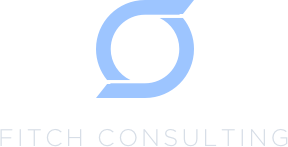
Blog

Upcoming Webinar - Building leaders at all levels: The key to a resilient organization
Creating organizational pathways for people to move up and across organizations can have huge impacts on DEI, retention, and your bottom line. At the same time, very few companies have strategies and programs in place that can do this – or that are working. Building leadership capability at all levels goes beyond formal training – we’re here to talk about how to create a pool of purposeful leaders at your company.

Creative Collaboration in the Virtual Workspace
Collaboration has its challenges in the virtual working world, but it remains essential to innovation and creative problem-solving. How can you create more opportunities for virtual teamwork?

Modern Workplace Solutions: Creating a Positive Work Culture
In what is now known as “traditional” workplace culture, employees reported to the office each day and conducted their work-related tasks in a familiar setting with familiar people. Establishing a healthy company culture may have been a challenge for some organizations, but there was plenty of opportunity for employees to gather, interact, develop working relationships, offer each other support, and participate in on-site training and career development. Things have changed, and organizations are rethinking their approach to fostering positive company cultures.

Intentional Inclusion in the Modern Workplace
Your office may not work much like it did a few short years ago. Today, the employee experience is increasingly recognized as a contributing factor to organizational success, and flexible work models are shifting workplace dynamics and reshuffling priorities for optimal performance and productivity.

Quiet Quitting: Continuing the Conversation
The term “quiet quitting” sparked a cultural phenomenon online, with several social media posts and articles popping up filled with research, insights, and opinions. To some, quiet quitting is about setting boundaries and simply doing the job that you were assigned, without going above and beyond. To others, quiet quitting is about lazy, unmotivated employees taking advantage of the new world of virtual work. There’s also a whole host of other definitions and explanations, with everyone bringing valid concerns to the conversation. Regardless of the intent behind quiet quitting, we know that the term points to some genuine problems for organizations to solve.

Real People in a Virtual World: Social Engagement on Purpose
Interpersonal connection is a critical facet of human society. Relationships allow people to create community and culture as well as function as part of a family, group, or organization. Social capital refers to the collective value of a person’s social networks — and the way these networks interact and work together.

A FAIR Employee Experience: Flexibility, Autonomy, Internal Mobility, and Relationships
Significant changes continue to rock the business world, and employee priorities are shifting in response. Keeping up with the expectations of today’s employee is proving challenging for some organizations.

What’s Your Leadership Style?
Successful business depends on effective leadership. Guiding an individual, team, or enterprise organization requires intentional decision-making, clear communication, and the ability to motivate and guide.

Guided Autonomy & Team Dynamics with the Hybrid Workplace Model
81% of workers prefer remote or hybrid work models. What can your company do to adapt to the new normal without sacrificing productivity and growth? It’s all about guided autonomy and team dynamics.

Leading Virtual Teams
The world has been moving to flexible, hybrid, and remote working for years now. As people managers, what are the differences in building and growing culture, teams, and people in a virtual context?

Aligning to Leverage Organizational Collective Intelligence
All organizations have knowledge silos. Imagine how much your company could improve if you found a way to harness all of the collective intelligence of everyone on your team.

Facilitating Collaboration and Communication in Remote Work Environments
The pandemic forced remote work upon almost every business. For some of us, it has been a challenge to adapt. But a year after COVID reached the U.S., we are living in what Stanford calls the “working-from-home economy.” The latest data shows remote work has normalized, with more companies willing to offer at least partial flex days away from the traditional office space.
